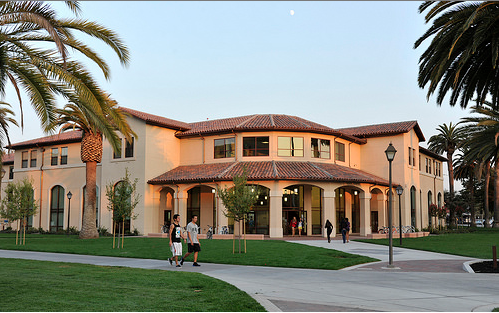What’s The Real Cost of University Housing?
Alexandra SudomoevaTHE SANTA CLARAApril 28, 2016
[dropcap]C[/dropcap]ollege is defined by a number of experiences: classes, student interaction, social life, professors and many other facets.
When I interviewed students for my Hackworth fellowship application, I asked them to pick one aspect of their college experience that presented them with the largest issue. The answer was almost always the same–housing.
To learn more about what factors regarding housing are important to students, my fellowship partner Roshan Rama and I decided to conduct a survey gauging student interest and issues in regards to housing.
The results were somewhat surprising: out of 64 college students, 24 percent indicated that they struggled to pay their rent.
However, when comparing Santa Clara’s housing rates to other universities in the area, the prices are relatively equal.
This raises a serious ethical question of whether housing prices in general inhibit students from becoming fully integrated in college life and education. Some students are forced to work multiple jobs to afford living in the area, depriving them of out the typical college experience that many other students get to enjoy.
At the end of the day, it all comes down to a simple question: when students are forced to work more than 20 hours a week to cover living expenses, is it realistic to expect the average student to succeed in his or her classes while maintaining a healthy social life?
Despite being a Jesuit institution built on the ideas of service and compassion, Santa Clara does not have any substantial affordable housing options at the moment. It goes without saying that financial aid does offer some help. However, the overwhelming number of students that still do not receive any support for one reason or another serves as proof of how affordable housing is a major issue.
Looking at the market, most universities in the area do not provide an affordable housing program either.
However, it is extremely challenging for the university administration to define the line between going with what is expected (the market prices) versus becoming a first mover in providing affordable housing to so many students who need it.
It comes as no surprise that there is an extremely strong demand for more affordable housing, which unfortunately is, not met by the housing and financial aid offices.
If we look back at the survey, out of all the people that moved off campus, 35 percent did so because on-campus housing is too expensive. But what can realistically be done to respond to the students’ concerns in the near future?
First and foremost, both housing and financial aid have special needs programs and other accommodations. Nevertheless, due to the lack of transparency and marketing, those 25 percent of students resort to making it on their own.
Often enough, students do not know about the aid options available to them. In other cases, some students might feel intimidated by the administrative structure or do not believe they can get help.
Does that mean that the housing management at Santa Clara is doing a poor job? Absolutely not. The meeting with the housing representatives here at Santa Clara allowed me to see the real complexity of the issue. On one hand, there are students that are asking for cheaper rent prices, and who can blame them? On the other hand, there is the challenge of running a grand institution with a complex system of debt payment and endowment management, which are also highly dependent on some of its fellow institutions.
Therefore, while it is impossible to completely solve the affordable housing problem (at least in the near future), it is possible to increase financial transparency for students to trust the housing office more.
There is a high chance that once students are more informed of the details regarding where their money goes towards and how it is managed, the entire student body attitude towards housing may change.
A number of students also expressed concerns about hefty fines. In addition, there seems to be confusion over where exactly their money is being spent when they pay a substantial amount for living in the dorms.
Overall, there is an overwhelming amount of distrust towards the housing office, especially when it comes to financial questions.
Increased transparency both in terms of financial aid programs as well as money management and allocation is part of the solution.
Any institution of the same size and volume should practice financial transparency as a way of communicating to its pupils the message of mutual trust and integrity.
Alexandra Sudomoeva is as senior mathematical economics and communication major.